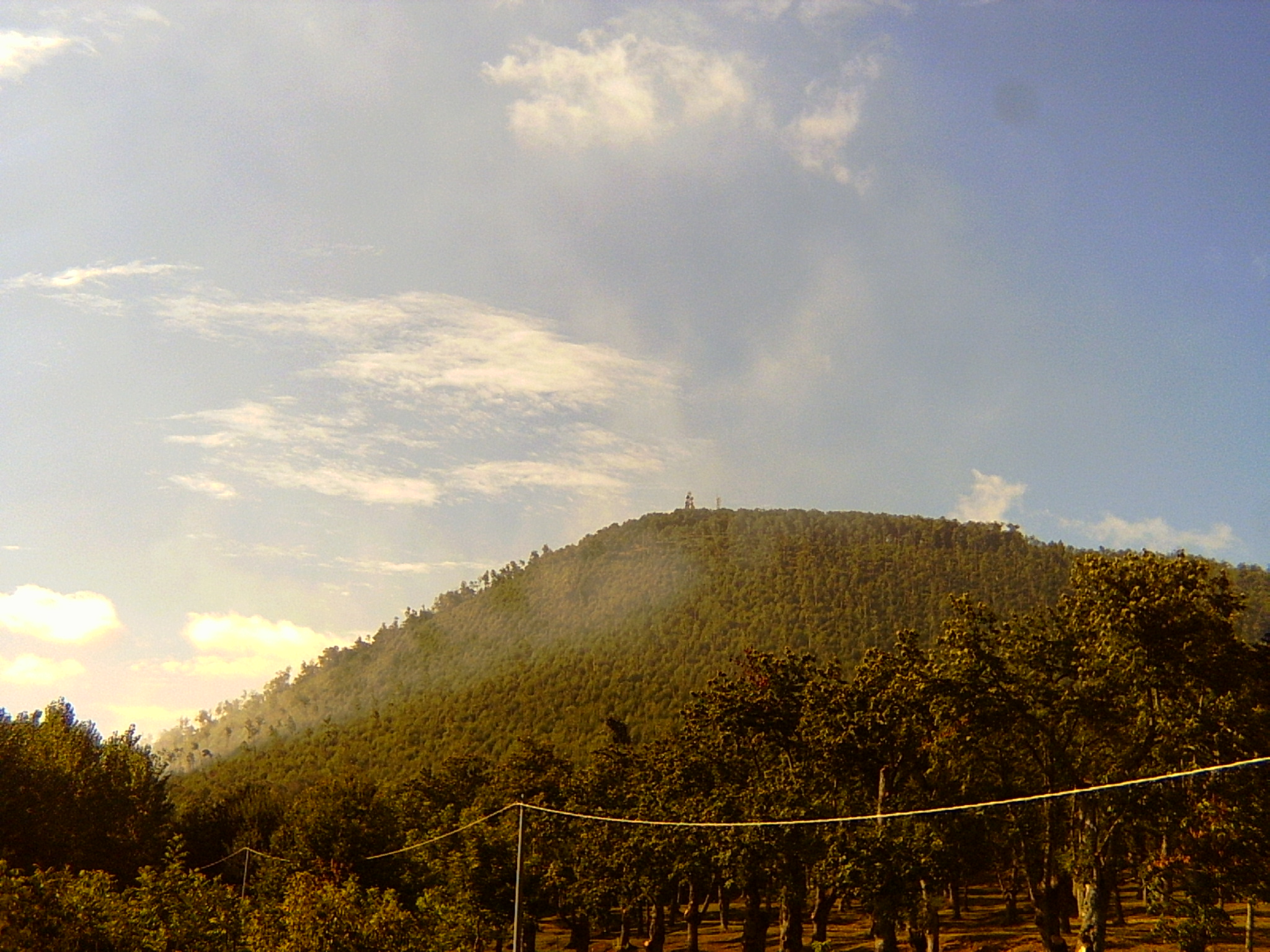Roccamonfina (volcano) on:
[Wikipedia]
[Google]
[Amazon]
 The Volcano of Roccamonfina is an extinct volcano in Roccamonfina,
The Volcano of Roccamonfina is an extinct volcano in Roccamonfina,
 The Volcano of Roccamonfina is an extinct volcano in Roccamonfina,
The Volcano of Roccamonfina is an extinct volcano in Roccamonfina, Campania
Campania is an administrative Regions of Italy, region of Italy located in Southern Italy; most of it is in the south-western portion of the Italian Peninsula (with the Tyrrhenian Sea to its west), but it also includes the small Phlegraean Islan ...
, southern Italy. It was active from some 650,000 to 50,000 years ago. It comprises an isolated large cone of some perimeter between the Monti Aurunci, the plain and valley of the Garigliano, the Monte Massico and the Monti Trebulani. The central caldera has a diameter of nearly and the small commune (town) of Roccamonfina is located ''inside'' it. Volcanic activity is now replaced by minor seismic movements and by the presence of mineral water
Mineral water is water from a mineral spring that contains various minerals, such as salts and sulfur compounds. It is usually still, but may be sparkling ( carbonated/ effervescent).
Traditionally, mineral waters were used or consumed at t ...
s. The mount is part of the Roccamonfina-Garigliano Mouth Regional Park, created in 1999.
The Ciampate del Diavolo are a series of hominid footprints in solidified ash from an eruption of the volcano 345,000 years ago.
Geology
The volcano originated as astratovolcano
A stratovolcano, also known as a composite volcano, is a typically conical volcano built up by many alternating layers (strata) of hardened lava and tephra. Unlike shield volcanoes, stratovolcanoes are characterized by a steep profile with ...
in the Garigliano rift valley
A rift valley is a linear shaped lowland between several highlands or mountain ranges produced by the action of a geologic rift. Rifts are formed as a result of the pulling apart of the lithosphere due to extensional tectonics. The linear ...
, with a group of eruptive mouths spread in a area; later an effusive activity concentrated in the central area, forming a volcanic cone some 1,800 m-high, mostly formed of tephra
Tephra is fragmental material produced by a Volcano, volcanic eruption regardless of composition, fragment size, or emplacement mechanism.
Volcanologists also refer to airborne fragments as pyroclasts. Once clasts have fallen to the ground, ...
and accompanied by minor cones such as the Monte Ofelio at south-west. Some 400,000 years ago, the collapse of the volcano's eastern sector formed a caldera
A caldera ( ) is a large cauldron-like hollow that forms shortly after the emptying of a magma chamber in a volcanic eruption. An eruption that ejects large volumes of magma over a short period of time can cause significant detriment to the str ...
which, for some time, was occupied by a volcanic lake
A volcanogenic lake is a lake formed as a result of volcanic activity. They are generally a body of water inside an inactive volcanic crater (Volcanic crater lake, crater lakes) but can also be large volumes of molten lava within an active volcan ...
.
A second period of volcanic activity began some 385,000 years ago with an explosive eruption
In volcanology, an explosive eruption is a volcanic eruption of the most violent type. A notable example is the 1980 eruption of Mount St. Helens. Such eruptions result when sufficient gas has dissolved under pressure within a Viscosity, viscous ...
, including eruptions from the former caldera. This phase continued until some 285,000 years ago. The formation of the volcano also modified the course of the Garigliano and Volturno
The Volturno (ancient Latin name Volturnus, from ''volvere'', to roll) is a river in south-central Italy.
Geography
It rises in the Abruzzese central Apennines of Samnium near Castel San Vincenzo (province of Isernia, Molise) and flows southe ...
rivers. The Volturno moved southwest in what is its current course; the Garigliano no longer reached the sea, and formed a lake (Lake Lirino) until (around 200,000 years ago) it eroded rocks near Suio and assumed the current course.
References
* {{coord, 41.29356341, N, 13.969195, E, display=title, region:IT_type:mountain_source:GNS-enwiki Extinct volcanoes of Europe Volcanoes of Italy Landforms of Campania Calderas of Italy VEI-6 volcanoes Pleistocene stratovolcanoes Pleistocene calderas